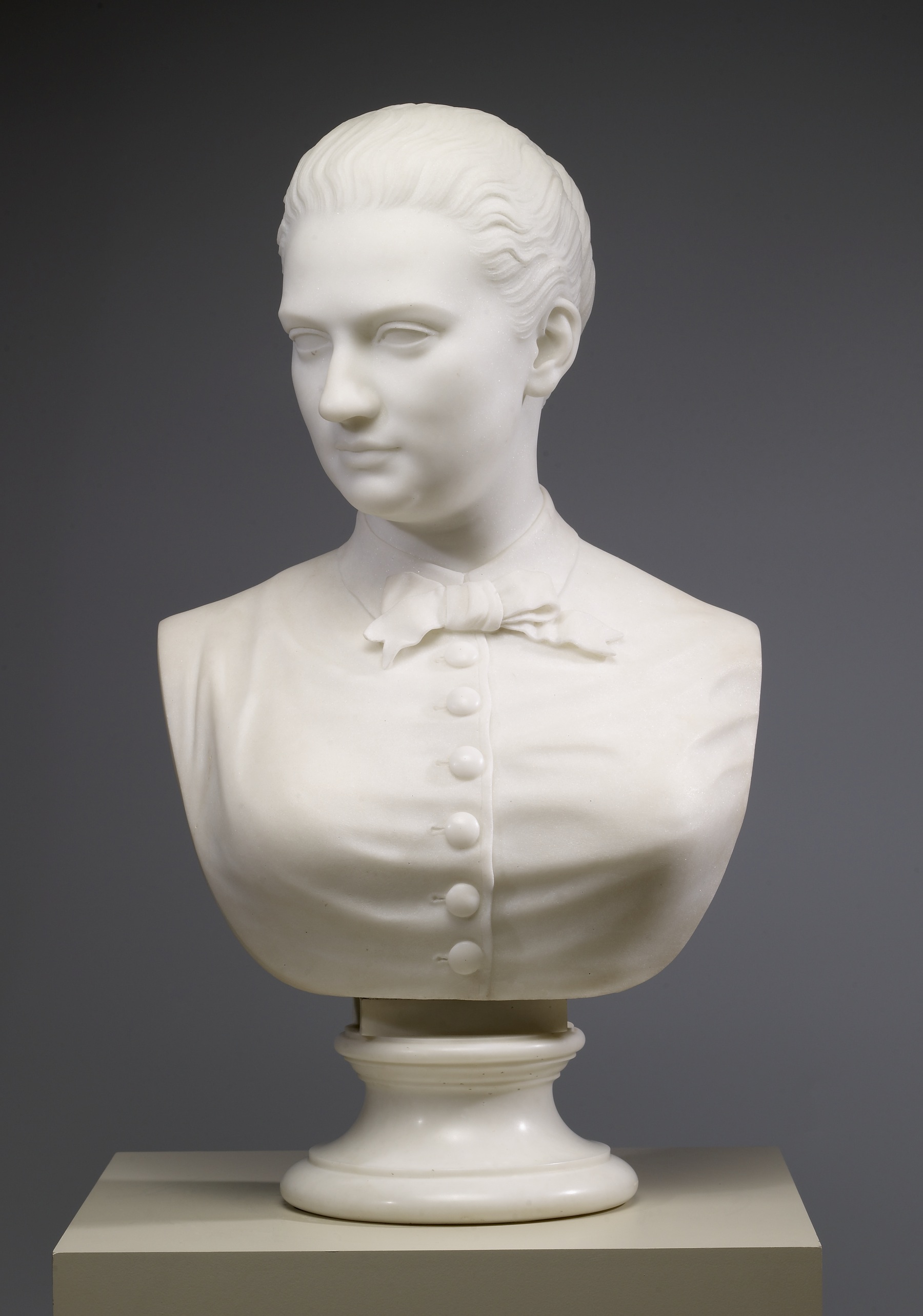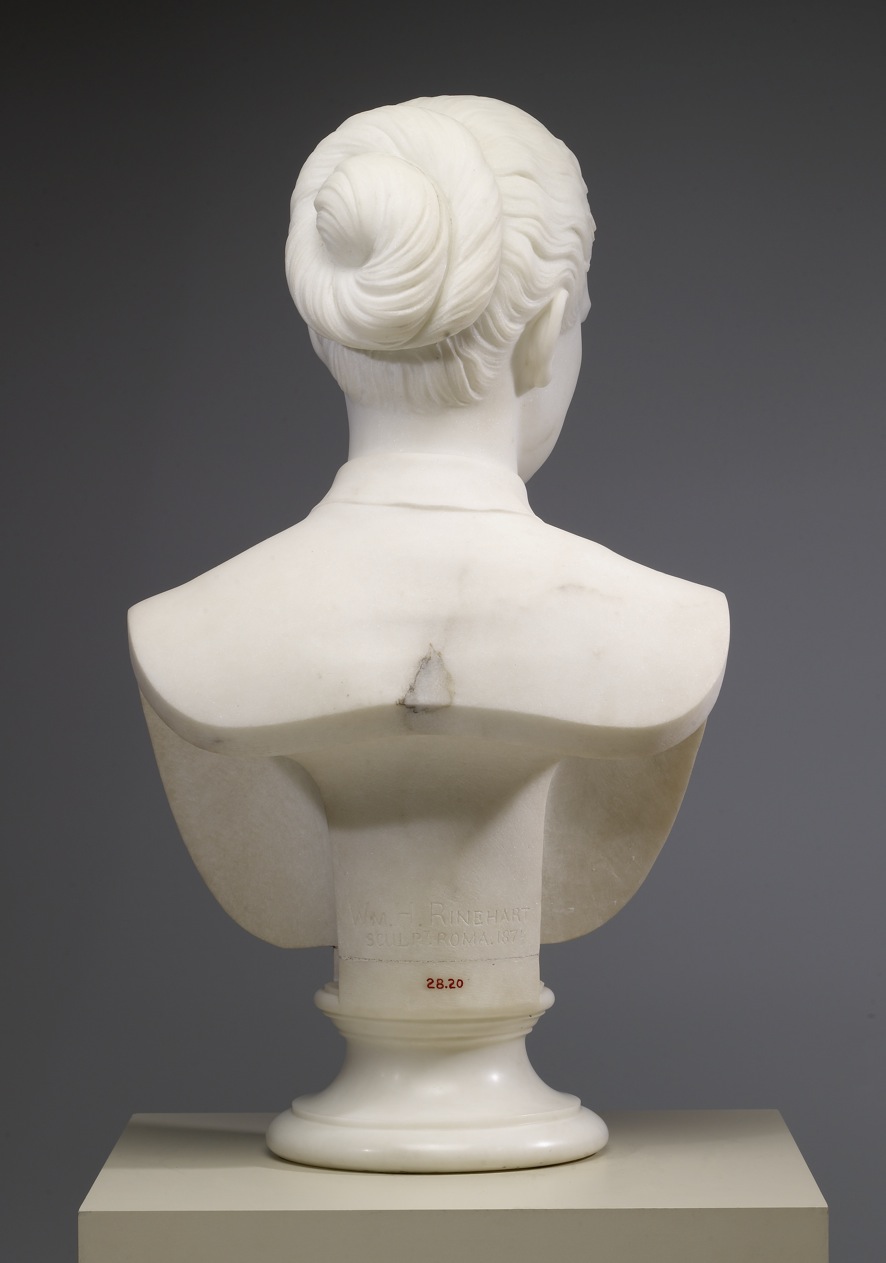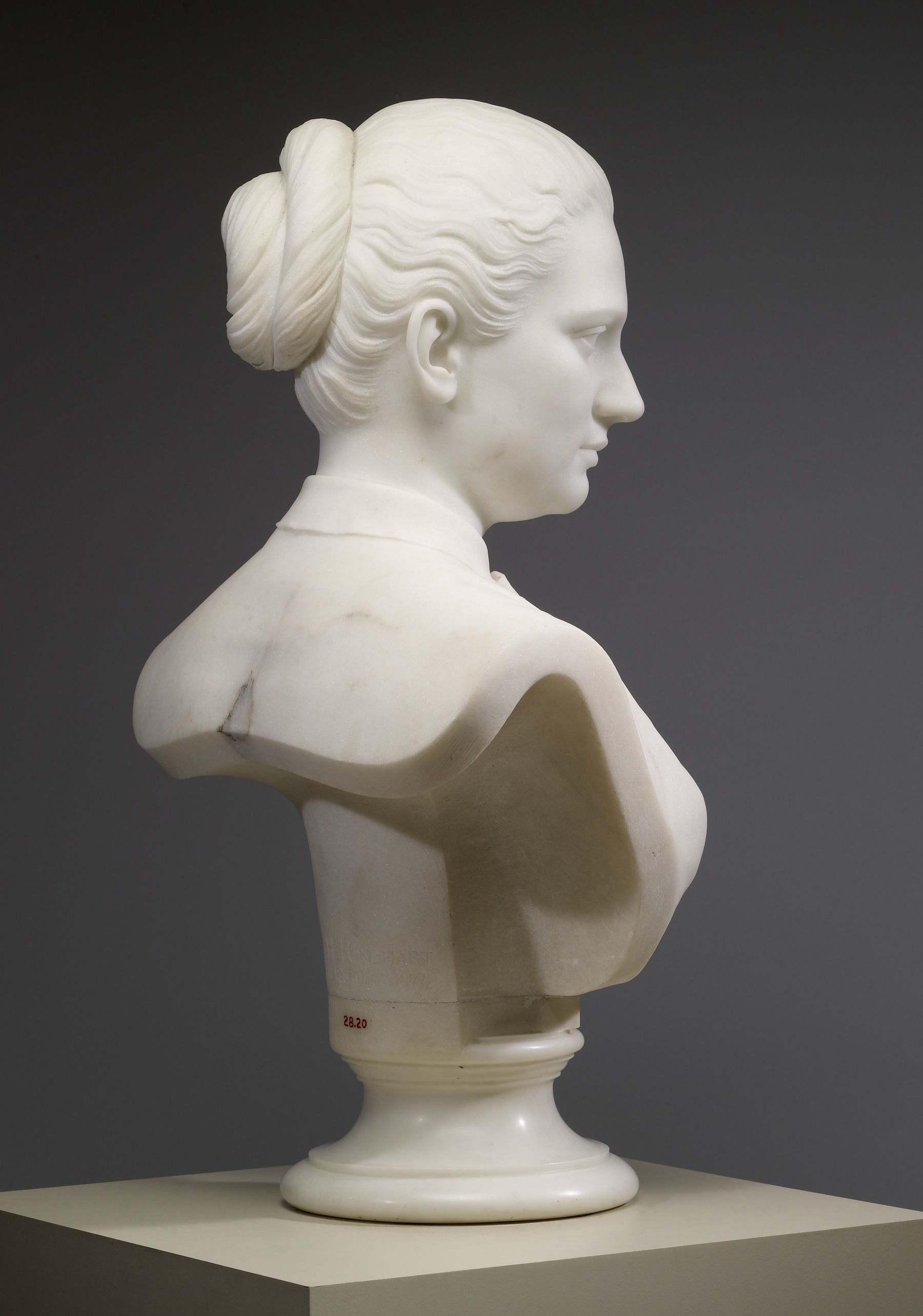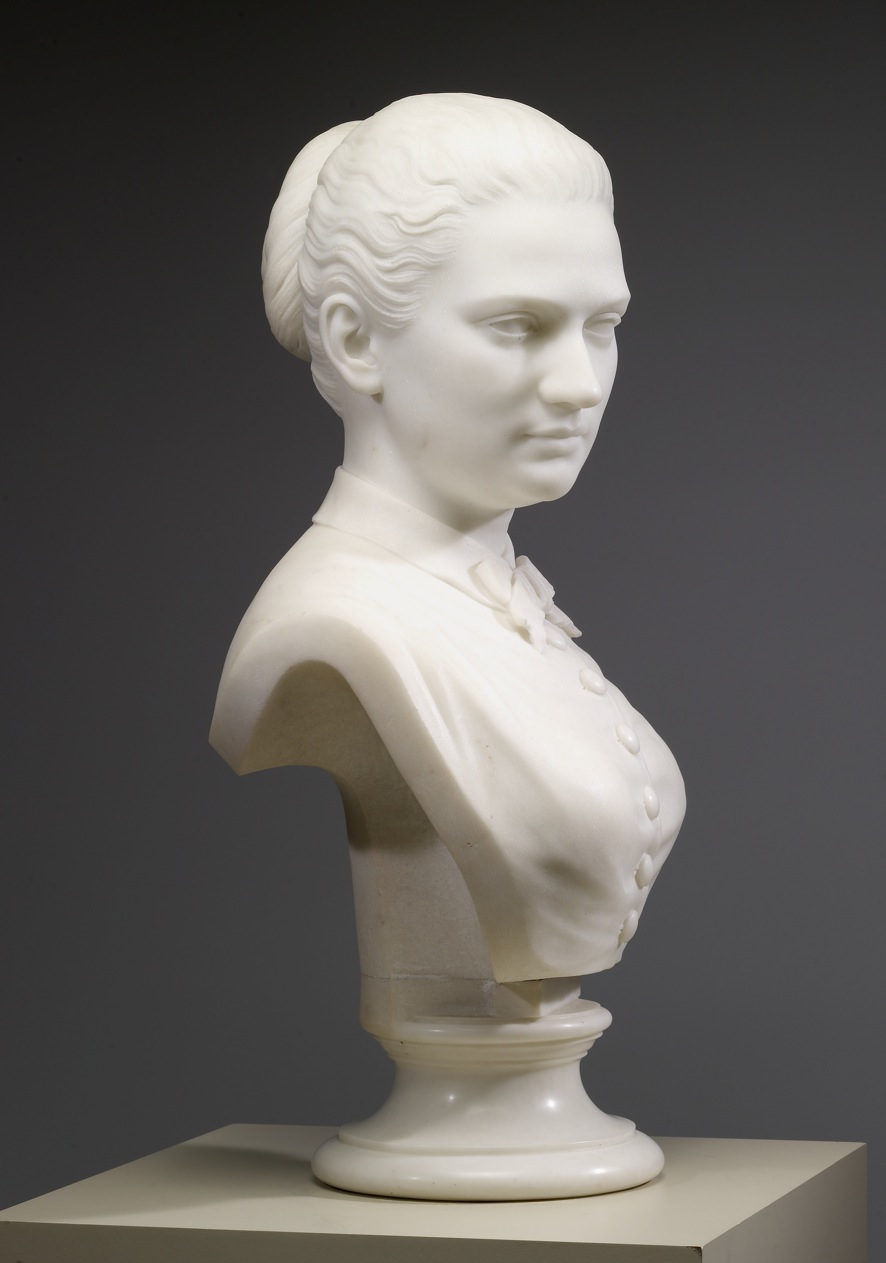Bust of Jennie Walters
(18th and 19th Centuries )
Rinehart was born in Union Bridge, Maryland, and attended evening classes at the Maryland Institute of the Mechanic Arts (now the Maryland Institute College of Art—MICA). After an initial trip to Europe in 1855, he returned in 1858 and settled in Rome, where he quickly found favor with critics and patrons. Rinehart modeled this bust of Jennie Walters while she was visiting Europe with her father, William, in 1873, and it was translated into marble by Italian craftsmen working in Rhinehart's studio the following year, shortly before the sculptor's death. Jennie’s father William was an art collector, and her older brother, Henry, later founded the Walters Art Museum.
Inscription
Provenance
Provenance (from the French provenir, 'to come from/forth') is the chronology of the ownership, custody, or location of a historical object. Learn more about provenance at the Walters.
William T. Walters, Baltimore, 1874, by commission; Henry Walters, Baltimore, 1894, by inheritance; Lyman Delano [date and mode of acquisition unknown]; Mrs. Lyman Delano, New York [date and mode of acquisition unknown]; Walters Art Museum, April 1948, by gift.
Exhibitions
| 2014-2016 | From Rye to Raphael: The Walters Story. The Walters Art Museum, Baltimore. |
| 2015 | Rinehart's Studio: Rough Stone to Living Marble. The Walters Art Museum, Baltimore. |
Conservation
| Date | Description | Narrative |
|---|---|---|
| 6/22/1971 | Treatment | cleaned |
Geographies
Italy, Rome (Place of Origin)
Measurements
Overall: H: 24 5/16 × W: 13 9/16 × D: 6 3/8 in. (61.7 × 34.5 × 16.2 cm)
Base: H: 3 9/16 × Diam: 8 9/16 in. (9 × 21.7 cm)
Credit Line
Gift of Mrs. Lyman Delano, 1948
Location in Museum
Accession Number
In libraries, galleries, museums, and archives, an accession number is a unique identifier assigned to each object in the collection.
In libraries, galleries, museums, and archives, an accession number is a unique identifier assigned to each object in the collection.
28.20














